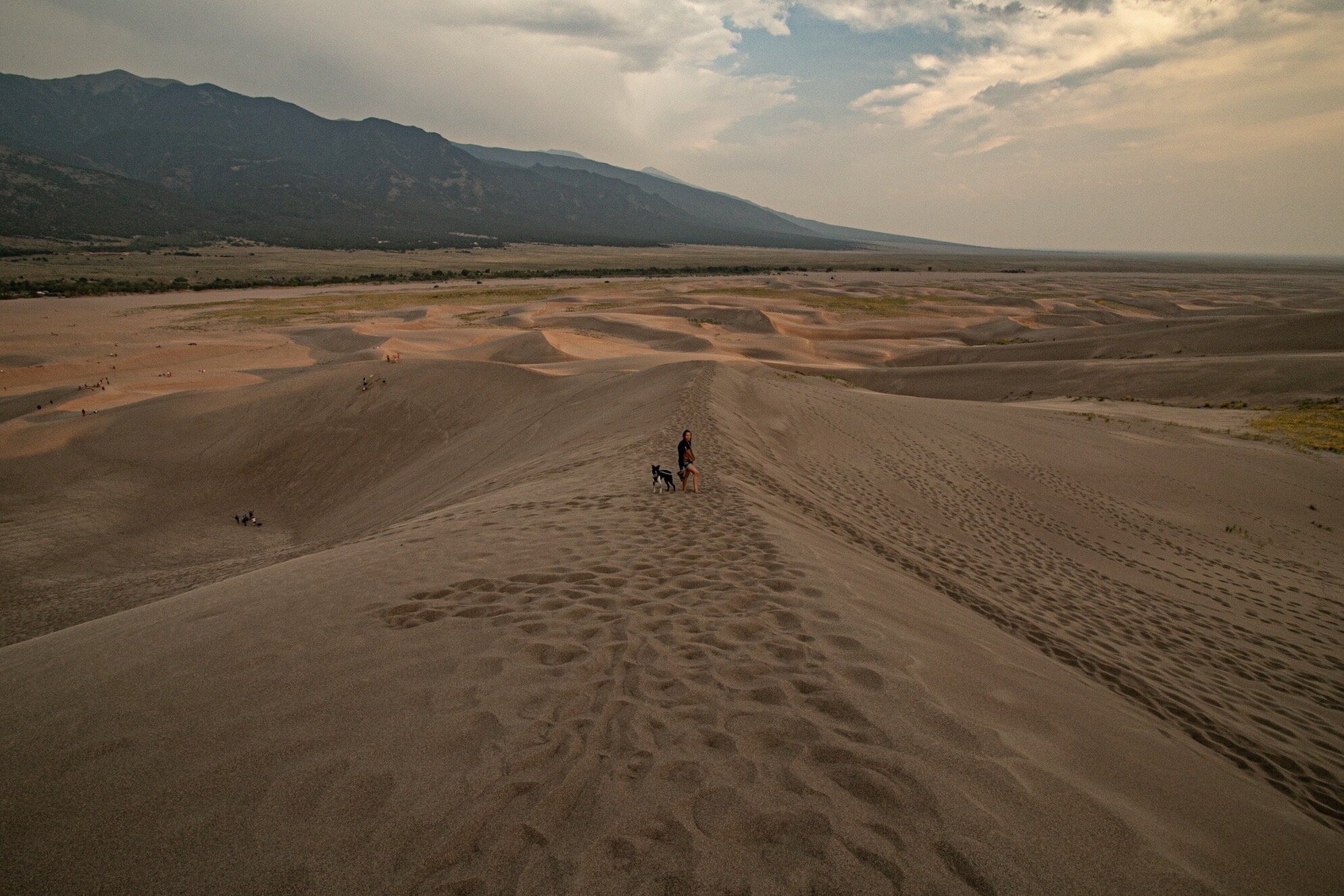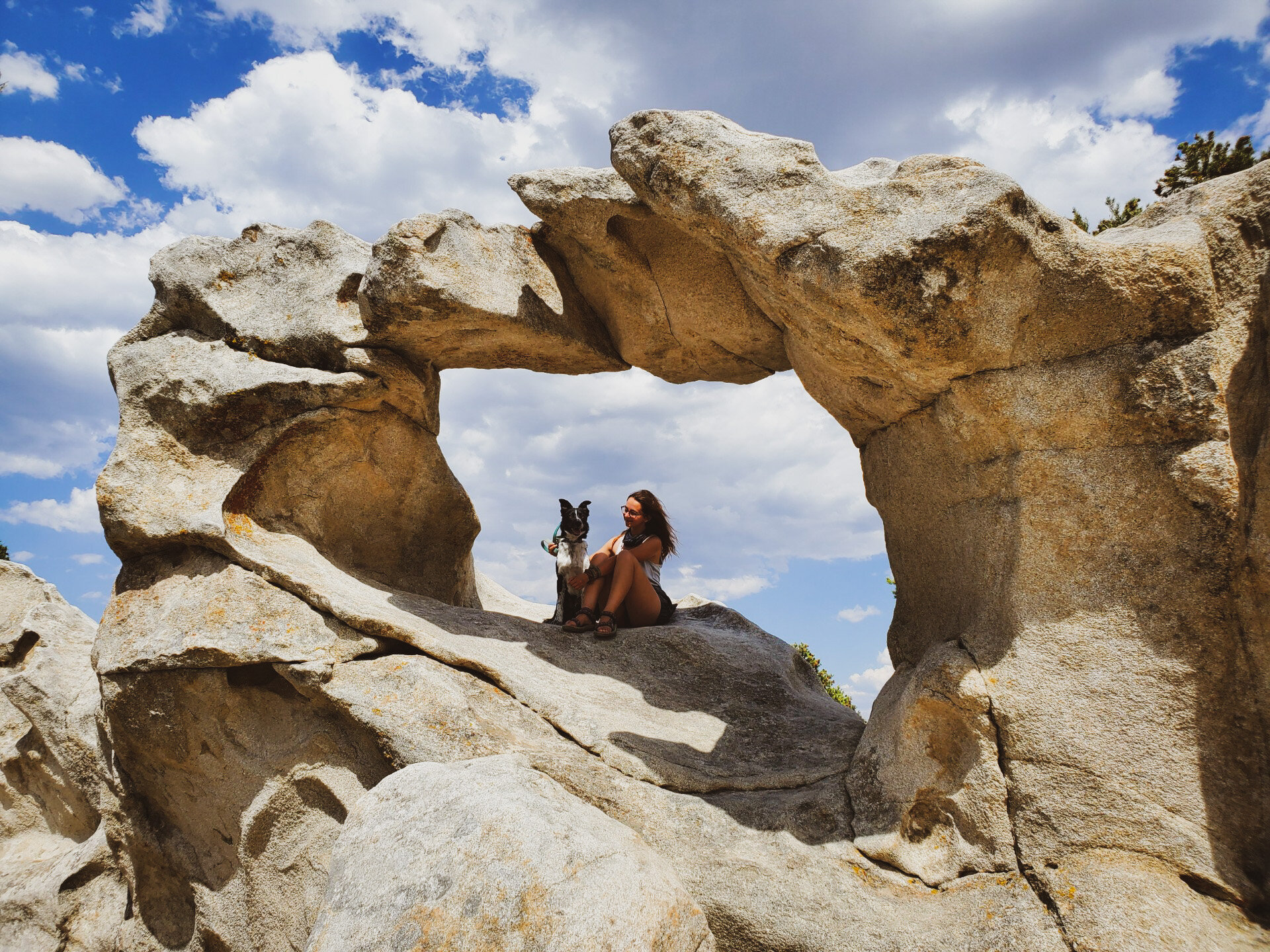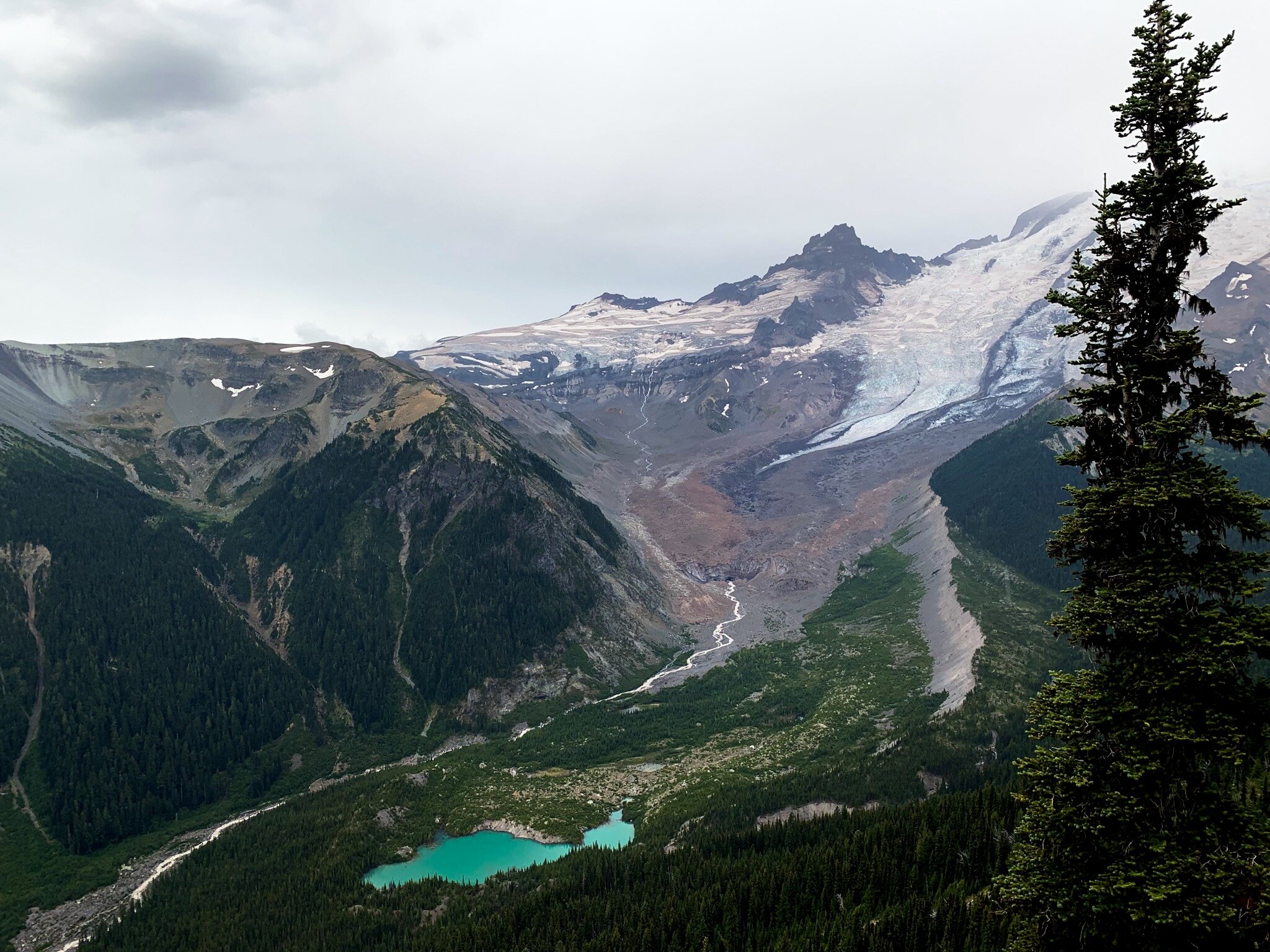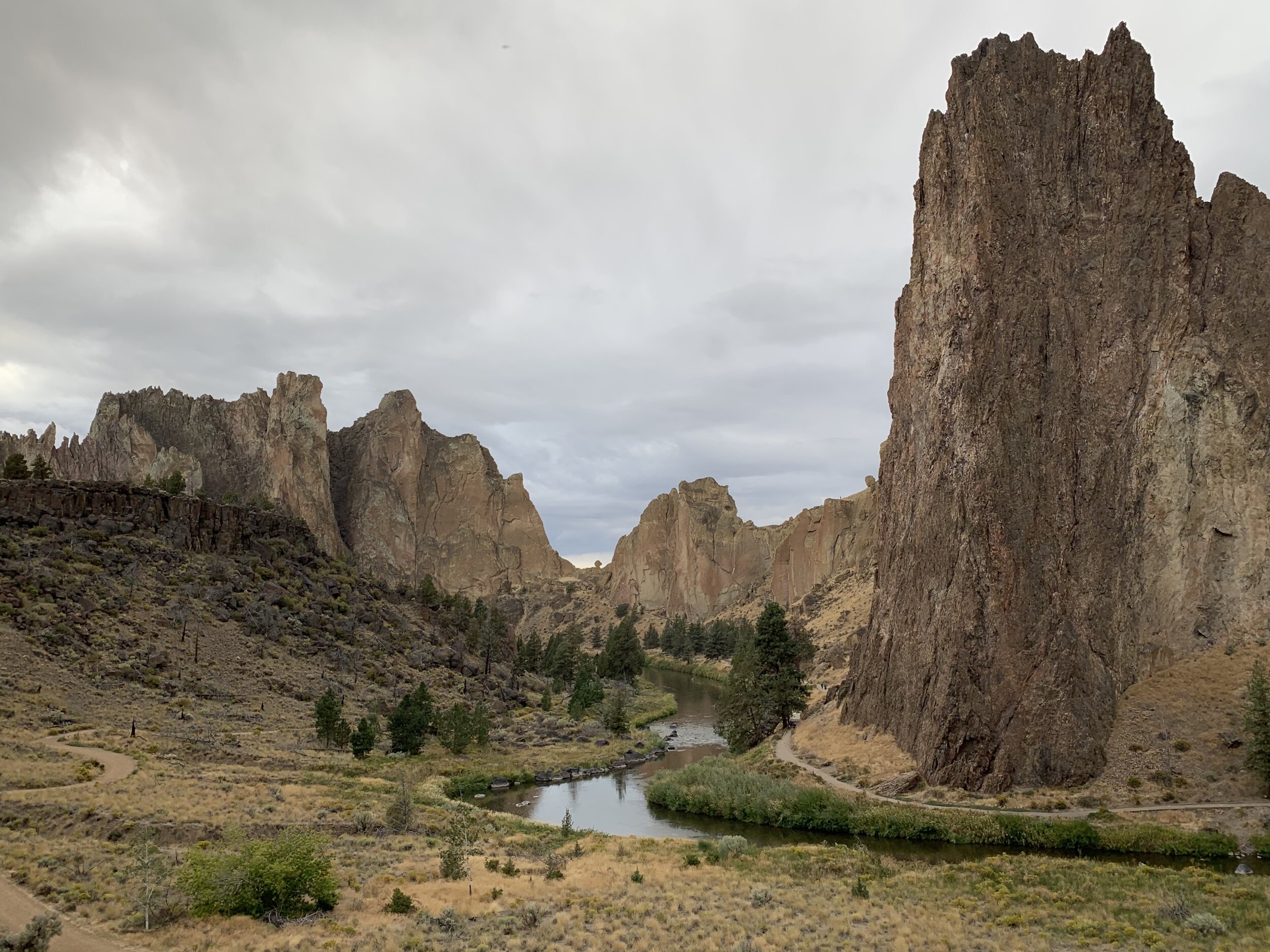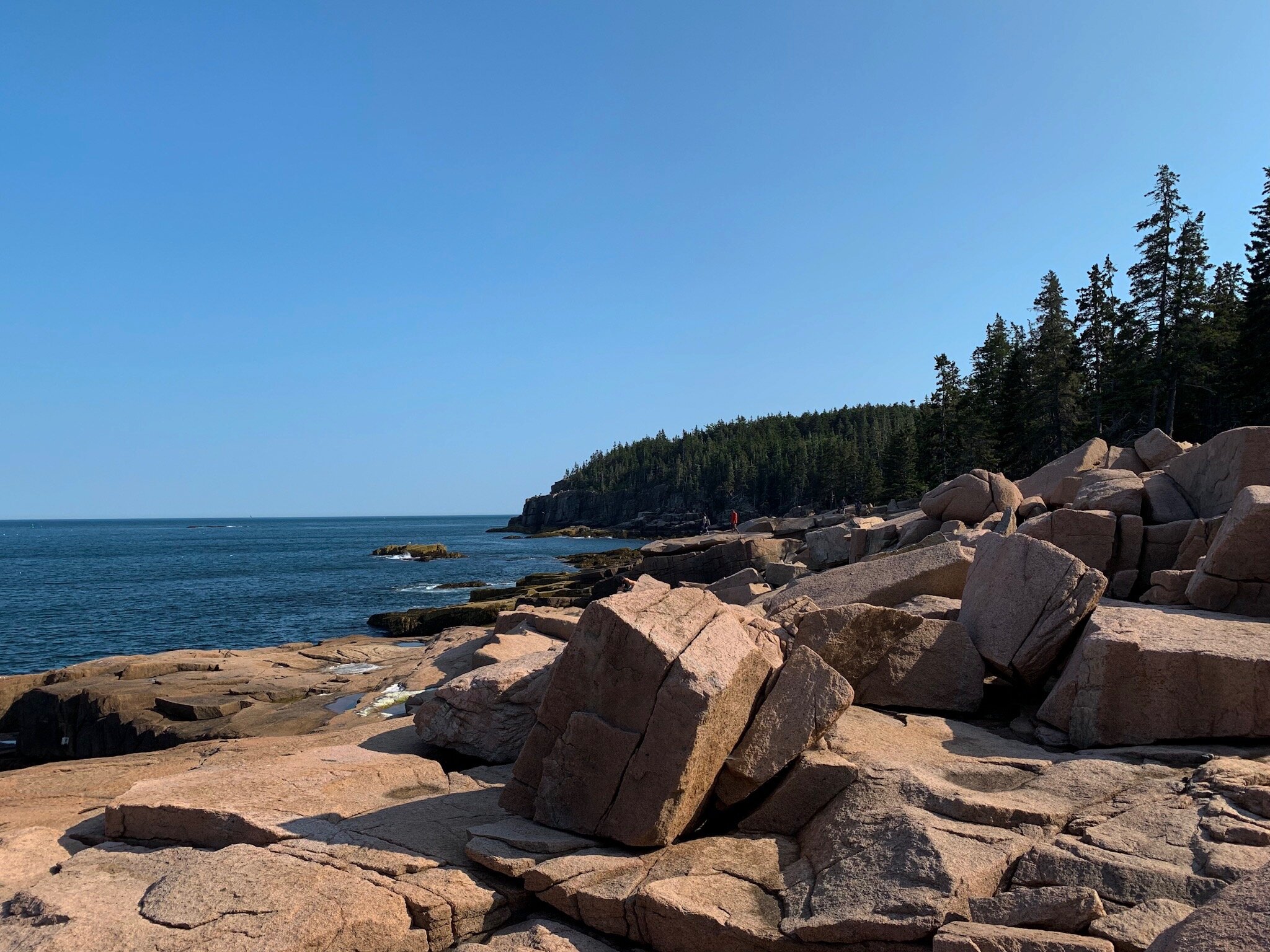For the past 3 weeks or so, my boyfriend, dog, and I have been traveling around Colorado. Colorful Colorado has so much to offer in terms of nature, and while we’d both been before, there were definitely a couple firsts this time around. Colorado is home to 4 beautiful National Parks: Rocky Mountain, Great Sand Dunes, Black Canyon of the Gunnison, and Mesa Verde, along with tons of Forest land, state parks, and other NPS designated sites worth visiting. Each one is completely unique from the last, and they each have their own highlights. Now that I’ve been to all 4 Colorado Parks, it’s time to rank them, so that you can best plan your own trip to one (or four) of Colorado’s iconic National Parks.
Great Sand Dunes National Park
#4: Mesa Verde National Park
While we loved all four Colorado Parks, someone has to be number four. The thing about Mesa Verde is, it’s about the history. You truly need to take the time to read each plaque as a way to understand what it is you’re looking at so you can appreciate the fantastic building skills of the ancient Puebloans. I love learning about history and culture, and MesaVerde is almost like a beautiful outdoor museum. The only reason it’s at the bottom of this list here, is because we visited during 2020, and the tours to go inside Cliff Palace were not running. We didn’t feel like we were able to get the full experience at Mesa Verde, so we’re looking forward to when we can go back and experience it in full (hopefully in cooler weather too.
Mesa Verde National Park
#3: Black Canyon of the Gunnison
Black Canyon of the Gunnison is truly a spectacular park. It is one of the steepest and narrowest canyons in the world, and its dark color is what gives the park its name. Here, you can explore by driving the 6 miles of road to the many (dog friendly) overlooks, including Painted Wall and Cedar Point, and drive down into the canyon via the East Portal Road, so you can experience the Gunnison River for yourself. If you’re more adventurous, score a permit to hike into the canyon on one of the three wilderness routes: Gunnison, Tomichi, or Warner. And remember, just because this park ranked #3 doesn’t mean I didn’t like it, I just liked the next two even more!
Black Canyon of the Gunnison National Park
#2: Great Sand Dunes
I absolutely love Great Sand Dunes. It’s like a spiritual escape to me. Walking barefoot on the sand at sunrise—there’s nothing better! Great Sand Dunes is home to the tallest sand dunes in North America. The entire dunes area is considered wilderness, and the park is home to animals like horned toads, bears, and tiger beetles. The sand can reach up to 150 degrees Fahrenheit in the summer during the day, but in the evenings and mornings, it’s pleasant, and even meditative to walk on. We particularly love this park because of how dog friendly it is. Much of the dunes area is an area where dogs are allowed, and there are a few trails where they are welcome too!
Great Sand Dunes National Park
#1: Rocky Mountain
There’s no question Rockies had to be #1. This enormous park is located in northern Colorado, and is home to some of the most beautiful sights in the state. From towering mountains to stunning lakes and rivers, no trip to Colorado is complete without seeing the Rocky Mountains. While I personally didn’t spend a lot of time here (it was too risky to visit this time around due to the fires), I’d still say it’s near the top of my list of parks I need to revisit. This green park is known for the presence of bears, moose, and other large alpine animals you’ll only find at this elevation.
Rocky Mountain National Park
Colorado is wild in itself. It’s quickly become one of my favorite states in the country, and the National Parks here are truly something that can’t be compared to! Which one is highest on your list?
Want help planning your Colorado road trip? Subscribe on Patreon and ask me anything!










